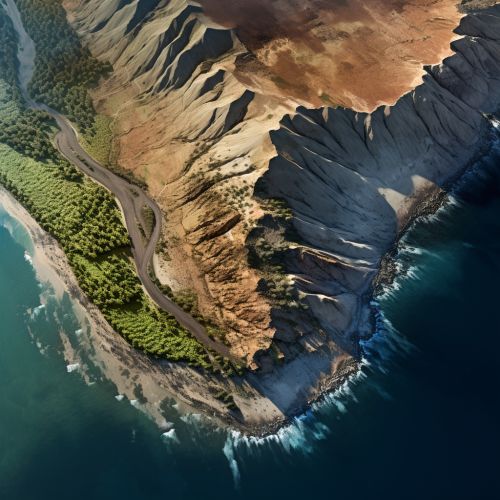The Dynamics of Submarine Landslides and Their Hazards
Introduction
Submarine landslides, also known as subaqueous landslides, are geological phenomena that occur underwater, typically on the continental slope. These landslides can be triggered by various factors such as earthquakes, volcanic activity, changes in sea level, and rapid sedimentation. They can result in significant displacement of water, leading to potentially destructive tsunamis. Understanding the dynamics of submarine landslides is crucial for assessing their potential hazards and developing mitigation strategies.


Causes of Submarine Landslides
Submarine landslides can be initiated by a variety of factors. The most common triggers include earthquakes, volcanic activity, and rapid sedimentation.
Earthquakes
Earthquakes can trigger submarine landslides by causing ground shaking and liquefaction of sediments. The shaking can destabilize the slope, leading to a landslide. In addition, the seismic waves can cause liquefaction, a process where water-saturated sediment temporarily loses strength and behaves like a fluid, which can also lead to slope failure.
Volcanic Activity
Volcanic activity can also trigger submarine landslides. The eruption of a submarine volcano can destabilize the surrounding seafloor, leading to a landslide. In addition, the rapid deposition of volcanic material can overload the slope, causing it to fail.
Rapid Sedimentation
Rapid sedimentation can lead to submarine landslides by overloading the slope. This can occur when large amounts of sediment are rapidly deposited on the seafloor, such as during a river flood or a volcanic eruption.
Dynamics of Submarine Landslides
The dynamics of submarine landslides involve several stages, including initiation, translation, and deposition.
Initiation
The initiation stage involves the destabilization of the slope and the onset of failure. This can occur due to various factors, as discussed above. The failure can involve a small portion of the slope or a large area, depending on the trigger and the properties of the slope.
Translation
The translation stage involves the movement of the landslide mass down the slope. The landslide can move as a coherent block, or it can break up into smaller pieces. The speed and distance of the movement can vary widely, depending on factors such as the slope angle, the water depth, and the properties of the landslide mass.
Deposition
The deposition stage involves the settling of the landslide mass on the seafloor. The landslide can form a deposit that is relatively intact, or it can be dispersed over a wide area. The deposition can also cause displacement of the water column, leading to a tsunami.
Hazards of Submarine Landslides
Submarine landslides can pose several hazards, including tsunamis, damage to seafloor infrastructure, and disruption of marine ecosystems.
Tsunamis
Submarine landslides can generate tsunamis by displacing a large volume of water. The size and impact of the tsunami depend on factors such as the volume and speed of the landslide, the water depth, and the distance to the coast.
Damage to Seafloor Infrastructure
Submarine landslides can cause damage to seafloor infrastructure, such as submarine communications cables, oil and gas platforms, and undersea pipelines. The landslide can directly impact the infrastructure, or it can cause damage indirectly through ground shaking or a tsunami.
Disruption of Marine Ecosystems
Submarine landslides can disrupt marine ecosystems by causing a sudden change in the seafloor topography and by stirring up sediment, which can smother benthic organisms and reduce water quality.
Conclusion
Understanding the dynamics of submarine landslides and their hazards is crucial for assessing the risks associated with these phenomena and for developing effective mitigation strategies. Further research is needed to improve our knowledge of these complex processes and their impacts on human society and the marine environment.
